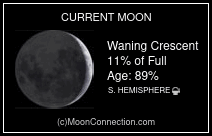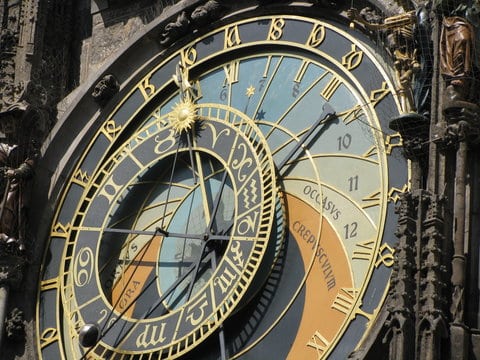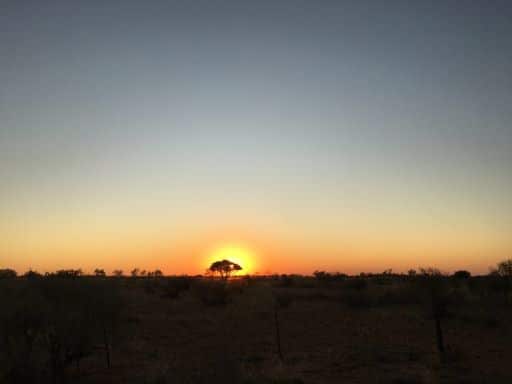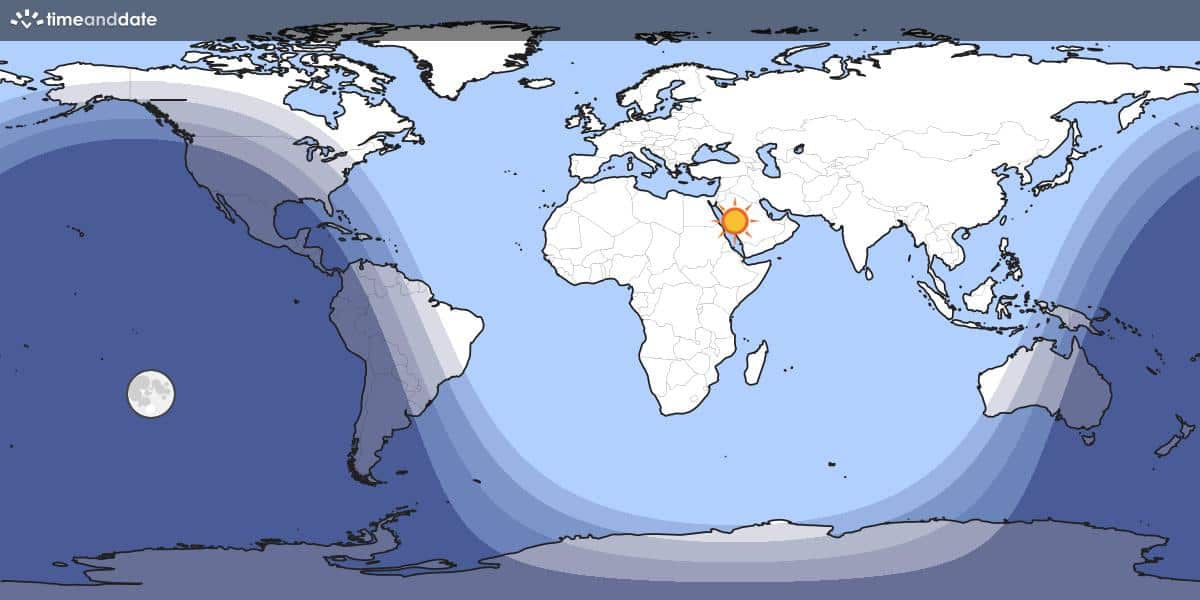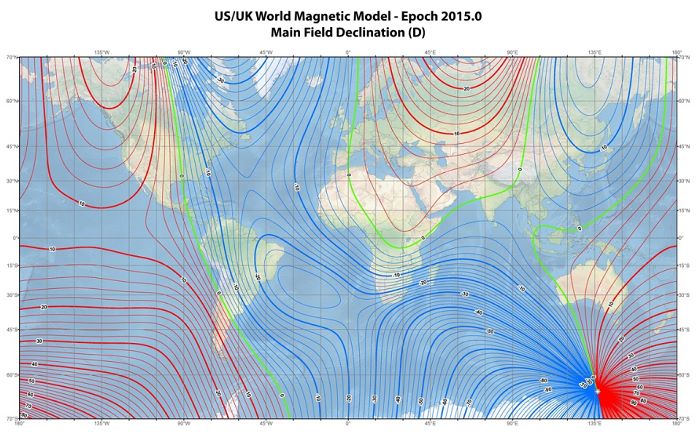N11 Superbubble
Steve Gottlieb’s Observations
LMC-N11G
04 55 29 -66 23 10; Dor
Size 0.8′
25″ (4/4/19 – OzSky): at 244x + NPB filter; moderately bright, easily visible circular glow around a single mag 12.5 star. Unfortunately, my written notes on this object were lost, so I’m going on memory here.
LMC-N11I
04 55 51 -66 34 21; Dor
Size 1.7’x0.8′
25″ (4/4/19 – OzSky): at 244x + NPB filter; fairly faint 40″ glow involving 3 stars. Located 11′ SSW of NGC 1763 (Bean Nebula). Again, my written notes on this object were lost, so I’m going on memory here.
Notes: Joseph Turner discovered LMC-N11I on 18 Apr 1879 (in Book I of “Notebooks kept by J Turner and P Baracchi” in the National Archives of Australia website) during an observation of NGC 1761 and 1760. His notebook sketch shows the clusters NGC 1761 and 1760 with LMC-N11I drawn as a round nebula to the SW with a few stars superimposed. N11I is incorrectly labeled as NGC 1760 (= GC 979). Turner wrote, “Two loose clusters [one is N11I] filled with faint nebulosity. A small elongated patch [NGC 1760] of neb containing (?) small stars directly south of [NGC 1761].
NGC 1760 = LMC-N11F = ESO 085-19 = LH 9
04 56 36 -66 31 36; Dor
V = 11.5; Size 2′
30″ (11/4/10 – Coonabarabran, 264x): appears as a 1.7′ E-W string of a half-dozen stars over fairly bright nebulosity. The emission haze is brightest just south of the string and extending to the west of the string a couple of arc minutes. Irregular nebulosity also branches out to the south of the string for another 2′ and involves a mag 12 star. Another 2′ string of N-S stars is on the west side of the haze.
NGC 1760 is at the SW end of a stunning complex (N11) of clusters and nebulosity including NGC 1763 = Bean Nebula, a showpiece nebula and cluster centered 7′ NE; NGC 1761, a larger cluster and nebulosity just 3′ N; NGC 1769, a bright emission nebula 8′ NE; along with NGC 1773, NGC 1776 and IC 2115. Lucke and Hodge assigned NGC 1760 and 1761 to the stellar association LH 9.
13.1″ (2/17/04 – Costa Rica): very faint, small, elongated 1′ strip of nebulosity just 3′ S of NGC 1761. One or two involved stars were barely resolved.
Notes: John Herschel discovered NGC 1760 = h2709 on 20 Dec 1835 and described “a very faint, small nebula, with three very small stars involved. Place deduced not from a sweep but from a drawing carefully made of its configuration with the neighbouring nebula, especially of the cluster [NGC 1761].” Steinicke attributes James Dunlop with the discovery (D 231), but I don’t believe this group of stars is obvious enough to have been picked up with his 9″ speculum reflector.
Joseph Turner sketched the entire complex with the 48″ GMT between 17 and 21 Apr 1879 (plate III, figure 24 in “Observations of the Southern Nebulae made with the [48″] Great Melbourne Telescope”. Turner’s sketch shows the E-W string of stars but a round nebula to the SW, matching the position of LMC-N11I, is identified as NGC 1760. In November 1884, Baracchi wrote, “Very faint, small, roundish, three stars in it, 16th or 17th magnitude. Agrees exactly with H[erschel]. and T[urner]. No stars in the field. Three stars involved are not shown distinctly in the lithograph. They really appear as three distinct stars involved in very faint roundish nebula, whereas lithograph shows bright nebula with stars too diffused and uncertain.” His sketch identifies GC 979 as the elongated strip just south of NGC 1771 with 3 embedded stars.
NGC 1761 = ESO 085-18 = S-L 122 = LH 9
04 56 38 -66 28 42; Dor
V = 9.9; Size 4.2’x3.0′
30″ (11/4/10 – Coonabarabran, 264x): bright, large cluster sandwiched between the showpiece Bean Nebula (NGC 1763) to the north and NGC 1760 to the south. The cluster contains roughly 80 stars mag 11 to 16 in a 3.5′ irregularly shaped group over some background haze. The stars are fairly even distributed except for a detached 1.3′ group of 10-12 stars off the NW side. Including this detached section, the overall size of this star cloud (association LH 9) is 5’x3.5′ and it is the central cluster in the N11 Superbubble. The visually brightest stars in LH 9 are late-O-type supergiants.
On the northwest side of the main cluster is HD 32228 = Brey 9, a compact knot containing at least 16 early-type stars including a Wolf-Rayet star (type WC5 with dominant carbon emission) and an O9-type star. Visually I noted Brey 9 as a close bright double star (HJ 3716 = 11.7/12.4 at 5″).
25″ (4/4/19): at 244x; Brey 9 was a fairly bright compact knot on the northwest side of NGC 1761. It had a high surface brightness and ~5″ diameter. A faint star was attached at the edge forming a “double”.
13.1″ (2/17/04 – Costa Rica): this rich group of very faint stars is located just south of the HII region/cluster NGC 1763. On the west side is a quasi-stellar mag 10 object and the cluster is elongated E-W, 2’x1′. On the west side of the brighter star is another small group of faint stars and haze that may be a continuation of the cluster.
Notes: James Dunlop discovered NGC 1761 = D 231 = h2710, along with NGC 1763 and NGC 1769, on 3 Aug 1826. He called it “a faint round nebula, 1′ diameter” in a trio with D 230 = NGC 1763 and D 232 = NGC 1769. His positions for the trio are ~15′ too far south (correct in RA). D 227, 228 and 229, recorded on 6 Nov and also described as a triangle of nebulae, may be another observation of NGC 1761, 1763 and 1769. Their positions was ~30′ to the NW.
John Herschel rediscovered NGC 1761 on 11 Dec 1835 (sweep 653) and recorded the “chief star 9th mag in a large loose cluster.” He made 3 observations and included it on a sketch (Plate III, fig 3), along with NGC 1760, 1763 and 1769. Joseph Turner sketched the entire complex as well in Apr 1879 with the Great Melbourne Telescope. NGC 1761 is shown as an irregular nebulous patch elongated E-W with a number of stars superimposed, particularly around the edges.
NGC 1763 = LMC-N11B = ESO 085-20 = S-L 125 = LH 10 = Bean Nebula
04 56 45 -66 24 36; Dor
Size 5’x3′
30″ (11/4/10 – Coonabarabran, 264x): The Bean Nebula complex (N11) is the second largest stellar nursery in the LMC after the Tarantula Nebula. The showpiece object is NGC 1763, which sits near the center of a stunning field of emission nebulae and clusters including NGC 1760 7′ S, NGC 1761 3′ S, NGC 1769 6.5′ SE, NGC 1773 8′ ENE and NGC 1776 11′ E. NGC 1763 is a very bright, very large irregular nebula, shaped like a kidney bean or a fetus. The main body extends 5’x3′, elongated SW-NE with a bulbous portion on the NE side and an indentation (weaker nebulosity) on the S side. Overall the surface brightness is very high, though uneven, and much fainter haze and filaments flow out from the Bean in most directions. Within the main body, the nebula is brightest in a loop on the SW side and secondly in a section on the NE side.
LH 10, a large cluster or OB-association (youngest in the N11 complex) with roughly two dozen resolved stars, is involved with the nebula. LH 10 includes a number of 12-13 mag stars (several of which are massive O3-type stars), many in an elongated 1′ group on the SW side. The group includes PGMW 3120, an O5.5V-type mag 12.4 “star” the HST resolved into a cluster containing 3 massive stars. LH 10’s brightest “star”, mag 11.7 PGMW 3070, is also an extremely compact cluster, resolved by the HST into 18 stars. A wide pair [17″ separation] of mag 11.9 and 12.9 stars (O3-type HD 268721 and O8-type PGMW 3223) is ~1.5′ ENE of the main stellar group; one of these may be IC 2115. At the NE edge of the cluster is mag 11.3 HD 268726 (a blue supergiant surrounded by an 8″ low excitation nebula) and 45″ further E is IC 2116, a high surface brightness HII knot of ~15″ diameter. Very faint haze at the NE side of NGC 1763 bulges towards IC 2116. The surrounding field is rich in stars between the individual objects with some locally brighter patches of nebulosity.
13.1″ (2/17/04 – Costa Rica): this emission nebula and cluster is set in fascinating field of several clusters and HII regions including NGC 1761, 1769, and 1773. The nebula is fairly bright, large, very elongated WSW-ENE, 4’x2′. A few stars are superimposed on the nebulosity. The roughly oval outline is irregular and the HII region appears brighter on the WSW side near a rich group of stars at the WSW tip. A couple of mag 11 stars are close off the NE end. IC 2115 and IC 2116 comprise the western and eastern portion of this object. After viewing this group of objects, the LMC, which was well past the meridian, disappeared behind some low clouds.
Notes: James Dunlop discovered NGC 1763 = D 230, along with NGC 1761 and NGC 1769, on 3 Aug 1826 with a second observation on 6 Nov 1826. He described a “very faint rather elliptical nebula, about 2′ diameter. This is the preceding and largest of three nebulae forming a triangle”. His position is ~12′ too far south, but close in RA.
John Herschel made 5 observations, the first on 2 Nov 1834 (sweep 508). On 13 Dec 1835 (sweep 653), he described it as “a vB, vL neb with stars (the chief of which in the anterior part of the neb taken) of a crooked rounded oblong shape. A fine object. See fig. 3. Plate III.” His excellent sketch includes NGC 1760, 1761, 1763 and 1769. Joseph Turner also sketched the complex between 17 Apr and 21 Apr 1879 with the Great Melbourne Telescope.
Williamina Fleming discovered the emission line spectrum of NGC 1763 on photographic spectrum plates taken at Harvard’s Arequipa station in 1897 (Harvard Circular 19). See IC 2115.
IC 2116 = LMC-N11A = HD 32340
04 57 16.2 -66 23 21; Dor
V = 12.4; Size 8″
30″ (11/4/10 – Coonabarabran, 264x): N11A (probably IC 2116) is a bright, high surface brightness knot, ~15″ diameter. It is located at or just beyond the NE edge of the showpiece Bean Nebula (NGC 1763), roughly 3′ NE of the center and certainly part of the same complex. A mag 11 star (Blue supergiant HD 268726 surrounded by a low excitation nebula) lies 45″ W.
N11A is a compact, discrete object called an HEB (High Excitation Blob). This class is distinguished by high excitation, small size, high density and tightly linked to early states of massive star formation. Examples include a similar object at the southeast edge of NGC 2083 (N159D), IC 2114 at the ESE edge of NGC 1748 (N83B), and an ionized blob at the north edge of NGC 2103 (N214C).
Notes: Williamina Fleming discovered IC 2116 = Fleming 88 on a Harvard objective prism plate taken in 1901 at the Arequipa station. The published position for this number, as well as IC 2215, is in error. See Harold Corwin’s thorough analysis of this number.
NGC 1769 = LMC-N11C = ESO 085-23 = LH 13
04 57 44 -66 27 48; Dor
Size 4’x2.2′
30″ (11/4/10 – Coonabarabran, 264x): bright, large oval nebula oriented SW-NE, roughly 3’x2′. At the center is a mag 11.5 “star” (Sk -66 41), with three mag 14-14.5 companions – the closest is 15″ SE (Wo 599, an O3-class star). A small, bright knot (~10″ diameter) is embedded on the S side of the nebula, just 0.9′ S of the central star. NGC 1769 is roughly centered within the stunning NGC 1763 (Bean Nebula) complex with showpiece NGC 1763 just 6.5′ NW, NGC 1761 6′ WSW, NGC 1776 6′ NE, NGC 1760 8′ SW and NGC 1773 7′ NNE.
Sk -66°41 was once thought to be one of the most single massive and luminous stars in the LMC but it was resolved into a very compact cluster with ~15 components. The star 15″ SE (Wo 599 = O3-class) may be the ionizing source of the nebula. The 10″ knot on the S side (identified as HNT 1 in SIMBAD) has also been resolved into a compact cluster of ~70 stars mag 17 and fainter.
13.1″ (2/17/04 – Costa Rica): fairly bright HII region in a fascinating group with several clusters and nebulae. Appears fairly large, round, 2′ diameter with a single mag 11 at the center. Situated 6′ SE of the cluster/HII region NGC 1763 and a similar distance NNE of NGC 1760.
Notes: James Dunlop discovered NGC 1769 = D 232 = h2716, along with NGC 1763 and NGC 1761, on 3 Aug 1826. He reported “a faint round nebula, about 1 1/2′ in diameter.” He also noted it was the smallest of the 3 nebulae. His position is 11′ too far SSW, roughly matching the offsets with the other two objects.
John Herschel first observed NGC 1769 on 2 Nov 1834 (sweep 508) and recorded, “B, irregularly R; 2′; has a 10th mag star in centre.” On 23 Dec 1834 (sweep 522) he called it “vB; very suddenly much brighter middle to a 10th mag star which is double or triple. Other clusters and nebulae in field.” He made a total of 5 observations.
NGC 1773 = LMC-N11E = ESO 085-25 = LH 14
04 58 11 -66 21 36; Dor
Size 2.7’x2.1′
30″ (11/4/10 – Coonabarabran): NGC 1773 is located at the NE end of the Bean Nebula complex with NGC 1763 centered 9′ SW, NGC 1769 7′ SSW and NGC 1776 5′ SSE. At 264x it appeared as a fairly large, bright glow, oval 3:2 ~N-S, ~2.2’x1.5′. Two brighter mag 12/13 stars (17″ separation oriented SW-NE) are involved, slightly southwest of the geometric center. On close inspection the northeastern component (mag 13 0-type supergiant SK -66°43) resolved into a very close double. In additional a couple of fainter mag 15/15.5 stars are superimposed on the north side of the glow. The nebulosity (N11E) is slightly irregular in surface brightness and brighter along the rim, particularly on the southwest side.
13.1″ (2/17/04 – Costa Rica): this HII region is the furthest NE in a group of HII regions and clusters. Appears fairly faint, fairly small, 1′-1.5′ diameter with a couple of stars or a knot near the center. Located 9′ ENE of NGC 1763 and a similar distance NNE of NGC 1769.
Notes: John Herschel discovered NGC 1773 = h2721 on 3 Jan 1837 and described as “pF, pL, irregularly R with two or three bright stars.” His position is accurate.
NGC 1776 = ESO 085-028 = S-L 145
04 58 40 -66 25 48; Dor
V = 13.0; Size 1.1′
30″ (11/4/10 – Coonabarabran, 264x): located on the E side of the NGC 1763 (Bean Nebula) complex, this cluster is moderately bright, fairly small, well concentrated with a small bright core surrounded by a 50″ halo. A couple of extremely faint stars are just visible in the halo. Located 5′ SE of emission nebula NGC 1773, 6′ ENE of emission nebula NGC 1769 and 2.7′ NE of a mag 10.8 star.
Notes: John Herschel discovered NGC 1776 = h2724 on 3 Jan 1837 and described “vF; S; R; gradually brighter in the middle.” His position is accurate.



